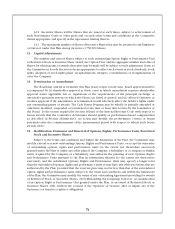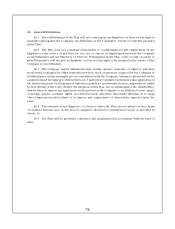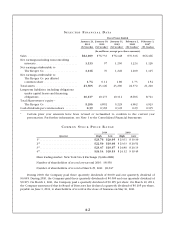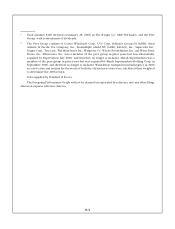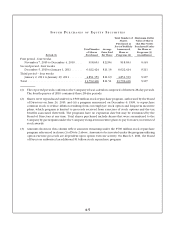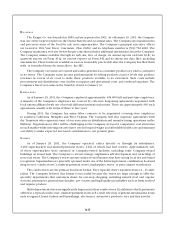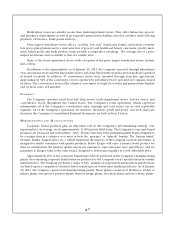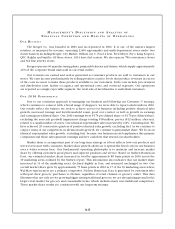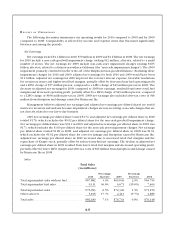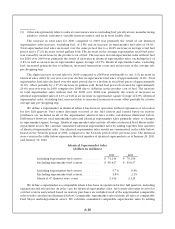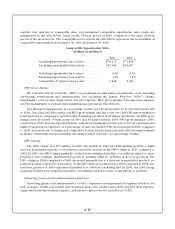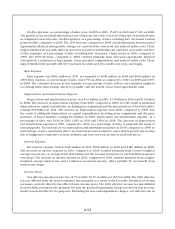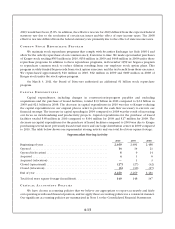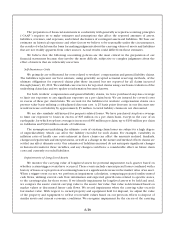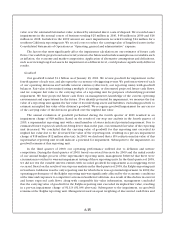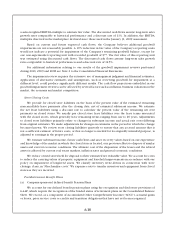Kroger 2010 Annual Report Download - page 86
Download and view the complete annual report
Please find page 86 of the 2010 Kroger annual report below. You can navigate through the pages in the report by either clicking on the pages listed below, or by using the keyword search tool below to find specific information within the annual report.
A-6
BUSINESS
The Kroger Co. was founded in 1883 and incorporated in 1902. As of January 29, 2011, the Company
was one of the largest retailers in the United States based on annual sales. The Company also manufactures
and processes some of the food for sale in its supermarkets. The Company’s principal executive offices
are located at 1014 Vine Street, Cincinnati, Ohio 45202, and its telephone number is (513) 762-4000. The
Company maintains a web site (www.kroger.com) that includes additional information about the Company.
The Company makes available through its web site, free of charge, its annual reports on Form 10-K, its
quarterly reports on Form 10-Q, its current reports on Form 8-K and its interactive data files, including
amendments. These forms are available as soon as reasonably practicable after the Company has filed them
with, or furnished them electronically to, the SEC.
The Company’s revenues are earned and cash is generated as consumer products are sold to customers
in its stores. The Company earns income predominantly by selling products at price levels that produce
revenues in excess of its costs to make these products available to its customers. Such costs include
procurement and distribution costs, facility occupancy and operational costs, and overhead expenses. The
Company’s fiscal year ends on the Saturday closest to January 31.
EMPLOYEES
As of January 29, 2011, the Company employed approximately 338,000 full and part-time employees.
A majority of the Company’s employees are covered by collective bargaining agreements negotiated with
local unions affiliated with one of several different international unions. There are approximately 300 such
agreements, usually with terms of three to five years.
During 2011, the Company has major labor contracts to be negotiated covering store employees
in southern California, Memphis and West Virginia. The Company will also negotiate agreements with
the Teamsters who represent some of our associates in distribution and manufacturing operations in the
Midwest. Negotiations in 2011 will be challenging as the Company strives for competitive cost structures
in each market while meeting our associates’ needs for good wages and affordable health care and maintain
our ability to make expected increased contributions to our pension plans.
STORES
As of January 29, 2011, the Company operated, either directly or through its subsidiaries,
2,460 supermarkets and multi-department stores, 1,014 of which had fuel centers. Approximately 44%
of these supermarkets were operated in Company-owned facilities, including some Company-owned
buildings on leased land. The Company’s current strategy emphasizes self-development and ownership of
store real estate. The Company’s stores operate under several banners that have strong local ties and brand
recognition. Supermarkets are generally operated under one of the following formats: combination food and
drug stores (“combo stores”); multi-department stores; marketplace stores; or price impact warehouses.
Thecombostoresaretheprimaryfoodstoreformat.Theytypicallydrawcustomersfroma2–2½mile
radius. The Company believes this format is successful because the stores are large enough to offer the
specialty departments that customers desire for one-stop shopping, including natural food and organic
sections, pharmacies, general merchandise, pet centers and high-quality perishables such as fresh seafood
and organic produce.
Multi-department stores are significantly larger in size than combo stores. In addition to the departments
offered at a typical combo store, multi-department stores sell a wide selection of general merchandise items
such as apparel, home fashion and furnishings, electronics, automotive products, toys and fine jewelry.


